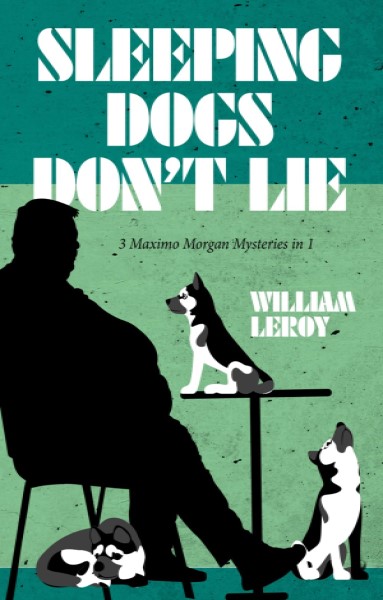Reviewed by Rahul Gaur
William LeRoy is back with Detective Maximo Morgan in ‘Sleeping Dogs Don’t Lie,’ which includes three engaging mysteries: Jigger Man, Guilt Trip, and Two-Timers. It’s more than just a mystery; it’s a satirical look at small-town life, gang culture, and the corrupt underbelly of politics. Purchase Here.
The first mystery, “Jigger Man,” introduces us to Max as he is hired by Father Vincente Quesada to investigate a mysterious figure named Jigger Man, aka Beelzebub, who is manipulating local teenagers into gang activities. The quirky way Max introduced himself, ‘Maximo Morgan’s the name, private dickery’s the game,’ really cracked me up. The plot thickens as Max navigates the political landscape, dealing with a nervous mayor, Buford Bailey, and a community on edge. The story has colorful characters, from the elderly crusader Lela Dimwitty to the various teenage gang members, each adding depth and humor to the narrative. The text is infused with references to Broadway musicals, which enrich the narrative by providing depth to Lela’s character, framing her motivations, and connecting her personal history to broader societal themes. Max navigates through the complexities, aiming to bring peace to the troubled town and protect the teenagers from further harm. The mystery unfolds with suspense and wit, keeping readers engaged until the end.
The second mystery, “Guilt Trip,” delves into Max’s struggles as he faces eviction from his office and deals with a stack of dubious documents brought in by a mysterious blonde. The story explores themes of guilt and responsibility, both in Max’s life and in the lives of the other characters, such as Claudette Phlegming, a schoolteacher trying to escape her financial woes. The narrative is introspective, offering a deeper look into Max’s character while maintaining the humor and intrigue that define the series.
The third mystery, “Two-Timers,” is a lighter, more humorous tale that sees Max investigating a suspected case of teenage two-timing. The story is filled with teenage drama, high school dances, and the complexities of young love. The narrative delves into the complexities of trust in relationships, particularly romantic ones. Max’s reluctance to engage in cases of infidelity highlights the fragile nature of trust and how easily it can be shattered by suspicion. Max’s interactions with his young assistant and the various teenagers are amusing and insightful, showcasing Leroy’s talent for blending humor with mystery.
One of the book’s strengths is its exploration of generational conflict. The book shows us different parts of society through Max’s investigations. Each case he solves helps us understand different problems and issues in the town in a layered manner. For instance, his disappointment in not becoming the detective he dreamed of, but his mentorship of the young character adds depth to his journey. Through Max’s perspective, the book dives into moral choices, social conflicts, and the importance of staying true to one’s principles, even when the odds are against you. Like always, LeRoy’s writing style is simple and relatable, making the book easy to read. For anyone interested in social dynamics, crime, or just a fun detective story, this book is worth the read.
